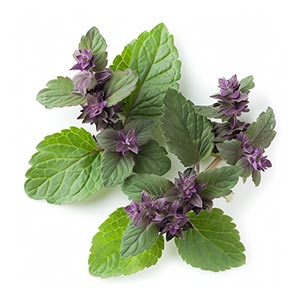The Woody fragrance family embodies the essence of nature's enduring beauty, with scents that are deeply rooted in the earthy, rich aromas of the forest. Characterized by warm, dry, and earthy notes derived from woods and mosses, including sandalwood, cedar, patchouli, and vetiver, woody fragrances convey a sense of grounding, stability, and natural sophistication. They often form the base of both masculine and feminine scents, providing a sturdy foundation upon which other notes can flourish. Their versatility is unmatched, ranging from light and airy compositions adorned with fresh, green notes to deep and resonant concoctions featuring rich, smoky undertones.
At the heart of perfumery, woody fragrances serve as a cornerstone, offering a broad palette of scents that capture the essence of the forest in all its forms. From the damp earthiness of the forest floor to the aromatic air of a pine-clad mountain, these fragrances evoke a world of natural wonder. They are celebrated for their enduring warmth and depth, appealing to those who seek a scent that embodies maturity, refinement, and a deep connection to the earth. Woody fragrances are not just scents; they are an olfactory journey through nature's vast landscapes, inviting wearers to explore the richness and diversity of the world around them.
In the modern perfumery landscape, woody fragrances continue to evolve, blending traditional wood notes with innovative elements from other fragrance families to create complex, multifaceted scents. Perfumers are increasingly experimenting with unconventional wood sources, synthetic molecules that mimic the warmth of wood, and unexpected combinations that challenge traditional perceptions of what a woody fragrance can be. This spirit of innovation ensures that woody fragrances remain at the forefront of scent design, offering timeless classics and cutting-edge creations that continue to captivate and inspire fragrance enthusiasts around the globe.
The use of woody materials in fragrances dates back to ancient civilizations. In cultures such as Egypt, Mesopotamia, and India, aromatic woods like cedar, sandalwood, and agarwood (oud) were highly valued for their scent and were often used in religious rituals, embalming practices, and personal adornment. These woods were burned as incense or infused into oils, serving both spiritual and olfactory purposes.
During the classical periods of Greek and Roman societies, perfumery became more sophisticated. The Romans, in particular, were known for their lavish use of fragrances. They utilized woody notes in their balms and oils, often combining them with florals and spices to create complex scents. The trade routes of the time facilitated the exchange of exotic woods and resins, enriching the palette of perfumers.
In the Middle Ages, the art of perfumery in Europe was influenced by interactions with the Middle East during the Crusades. The introduction of distillation techniques allowed for the extraction of essential oils from woods, leading to more potent and long-lasting fragrances. Sandalwood and cedar remained popular, while new materials like patchouli began to emerge.
The Renaissance period saw a revival in the arts and sciences, including perfumery. Wealthy patrons commissioned bespoke scents, and woody notes were often featured prominently. The use of musk and ambergris, though animal-derived, complemented woody bases, adding depth and sensuality.
The early 20th century marked a significant turning point with the creation of Chypre by François Coty in 1917. Although chypre is its own fragrance family, it heavily relies on woody notes, particularly oakmoss and patchouli, combined with citrus and floral elements. This composition paved the way for more abstract and sophisticated uses of woody accords in perfumery.
The development of synthetic aromatic compounds expanded the possibilities for perfumers. Molecules like vetiveryl acetate and Iso E Super allowed for new interpretations of woody scents, offering consistency and intensity that natural materials sometimes lacked. These innovations led to the creation of iconic fragrances that centered around woody themes, such as Guerlain's Vetiver (1959) and Dior's Eau Sauvage (1966).
In recent decades, woody fragrances have gained immense popularity across both men's and women's perfumery. The unisex appeal of woody scents aligns with modern trends toward gender-neutral fragrances. Ingredients like cedarwood, sandalwood, vetiver, and patchouli are used extensively, often combined with spicy, aromatic, or even gourmand notes.
The resurgence of oud in Western perfumery is a notable development. Once primarily used in Middle Eastern fragrances, oud has become a coveted material in luxury perfumes, adding a rich and complex woody character.
At the heart of perfumery, woody fragrances serve as a cornerstone, offering a broad palette of scents that capture the essence of the forest in all its forms. From the damp earthiness of the forest floor to the aromatic air of a pine-clad mountain, these fragrances evoke a world of natural wonder. They are celebrated for their enduring warmth and depth, appealing to those who seek a scent that embodies maturity, refinement, and a deep connection to the earth. Woody fragrances are not just scents; they are an olfactory journey through nature's vast landscapes, inviting wearers to explore the richness and diversity of the world around them.
In the modern perfumery landscape, woody fragrances continue to evolve, blending traditional wood notes with innovative elements from other fragrance families to create complex, multifaceted scents. Perfumers are increasingly experimenting with unconventional wood sources, synthetic molecules that mimic the warmth of wood, and unexpected combinations that challenge traditional perceptions of what a woody fragrance can be. This spirit of innovation ensures that woody fragrances remain at the forefront of scent design, offering timeless classics and cutting-edge creations that continue to captivate and inspire fragrance enthusiasts around the globe.
History
The woody fragrance family is one of the most enduring and significant categories in the world of perfumery. Characterized by warm, rich, and grounding notes, woody scents have been a foundational element in perfume compositions for centuries. Their history is intertwined with the evolution of perfumery itself, reflecting changes in culture, technology, and artistic expression.The use of woody materials in fragrances dates back to ancient civilizations. In cultures such as Egypt, Mesopotamia, and India, aromatic woods like cedar, sandalwood, and agarwood (oud) were highly valued for their scent and were often used in religious rituals, embalming practices, and personal adornment. These woods were burned as incense or infused into oils, serving both spiritual and olfactory purposes.
During the classical periods of Greek and Roman societies, perfumery became more sophisticated. The Romans, in particular, were known for their lavish use of fragrances. They utilized woody notes in their balms and oils, often combining them with florals and spices to create complex scents. The trade routes of the time facilitated the exchange of exotic woods and resins, enriching the palette of perfumers.
In the Middle Ages, the art of perfumery in Europe was influenced by interactions with the Middle East during the Crusades. The introduction of distillation techniques allowed for the extraction of essential oils from woods, leading to more potent and long-lasting fragrances. Sandalwood and cedar remained popular, while new materials like patchouli began to emerge.
The Renaissance period saw a revival in the arts and sciences, including perfumery. Wealthy patrons commissioned bespoke scents, and woody notes were often featured prominently. The use of musk and ambergris, though animal-derived, complemented woody bases, adding depth and sensuality.
The early 20th century marked a significant turning point with the creation of Chypre by François Coty in 1917. Although chypre is its own fragrance family, it heavily relies on woody notes, particularly oakmoss and patchouli, combined with citrus and floral elements. This composition paved the way for more abstract and sophisticated uses of woody accords in perfumery.
The development of synthetic aromatic compounds expanded the possibilities for perfumers. Molecules like vetiveryl acetate and Iso E Super allowed for new interpretations of woody scents, offering consistency and intensity that natural materials sometimes lacked. These innovations led to the creation of iconic fragrances that centered around woody themes, such as Guerlain's Vetiver (1959) and Dior's Eau Sauvage (1966).
In recent decades, woody fragrances have gained immense popularity across both men's and women's perfumery. The unisex appeal of woody scents aligns with modern trends toward gender-neutral fragrances. Ingredients like cedarwood, sandalwood, vetiver, and patchouli are used extensively, often combined with spicy, aromatic, or even gourmand notes.
The resurgence of oud in Western perfumery is a notable development. Once primarily used in Middle Eastern fragrances, oud has become a coveted material in luxury perfumes, adding a rich and complex woody character.

Evocative Nature & when to wear
Woody fragrances evoke the tranquility and majesty of the forest, bringing a sense of calm and connectedness to nature. They are well-suited for everyday wear as well as special occasions, offering a timeless elegance and understated sophistication.Evening and Formal Occasions: The depth and sophistication of woody scents also make them suitable for evening events and formal gatherings. The rich, enduring base notes provide a luxurious and refined backdrop, enhancing the wearer's presence in more dressed-up settings.
Autumn and Winter: The inherent warmth and richness of woody fragrances align beautifully with the cooler months of autumn and winter. They envelop the wearer in a comforting warmth, reminiscent of a cozy fire or a walk through a forest laden with fallen leaves.
Professional and Business Environments: Woody fragrances convey a sense of reliability and strength, making them a fitting choice for business meetings and professional environments. Their understated elegance supports an image of confidence and competence.
Travel and Adventure: For those with a love for exploration and adventure, woody fragrances evoke the spirit of the wild and the excitement of discovery. They are a perfect companion for travel, offering a sense of connection to the vast, uncharted corners of the world.

Characteristics of Woody Fragrances
Woody fragrances ground themselves in the rich and earthy essence of the forest. Known for their deep, enduring warmth, these scents draw inspiration from nature's foundational elements—trees, roots, and resins. The classic Woody fragrance structure incorporates:Top Notes: Often fresh or herbal, to introduce the fragrance with a natural and inviting appeal. Ingredients like bergamot, lavender, and citrus provide a light introduction that gently transitions into the heart of the scent.
Heart Notes: At the core of Woody fragrances lie the rich, full-bodied scents of various woods. Cedar, sandalwood, and pine create a complex and layered aroma that's both comforting and sophisticated. These heart notes may also be complemented by spices or florals to add depth and diversity.
Base Notes: The foundation of Woody scents is characterized by the most enduring and resonant woody notes, such as vetiver, oakmoss, and amberwood. These base notes provide a lasting depth and warmth, often enriched with resinous or earthy elements like amber and patchouli for a truly profound finish.
Main Components and Notes of Woody Fragrances
Sandalwood: Known for its smooth, creamy, and rich scent.Cedar: Offers a clean, sharp woody aroma.
Patchouli: Adds a deep, earthy quality with a slightly sweet undertone.
Vetiver: Provides a complex, slightly smoky or leathery green scent.
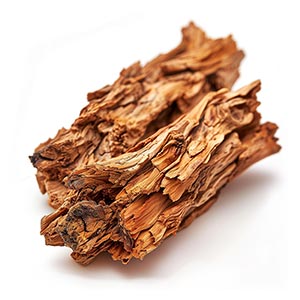
Cedarwood is known for its warm, woody scent, often used in perfumes and colognes for its grounding and calming effects.

A creamy and warm fragrance that is versatile and blends well with diverse fragrance ingredients such as florals, woods and spices.
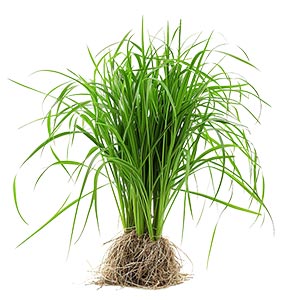
Vetiver is known for its unique, earthy and woody aroma, often used as a base note in fragrances for its strong fixative properties.
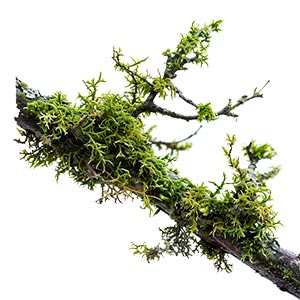
A sensual and musky fragrance with a touch of damp forest floor that is used as also used as a fixative to give scents a longer life on the skin.

Pine adds a crisp, fresh, and invigorating aroma to fragrances, evoking the essence of a lush forest.
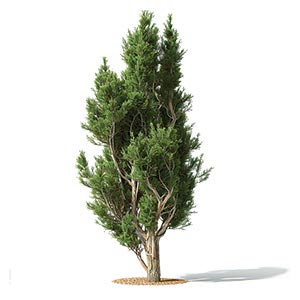
Cypress in fragrances is valued for its woody, resinous aroma, bringing depth and a fresh green character to chypre and woody scents.

Birch is used in perfumery for its rich, leathery, and smoky scent, often found in masculine or unisex fragrances.
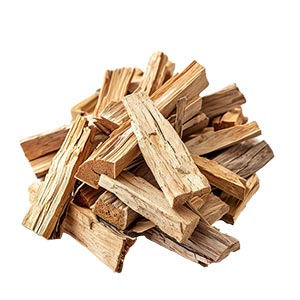
Guaiac Wood adds a rich, smoky, and slightly sweet aroma to fragrances, imparting a warm and resinous quality.
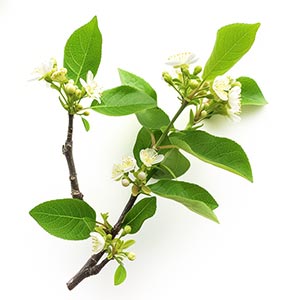
Amyris is a versatile wood essence that provides a smooth and refined fragrance with hints of sandalwood, citrus, and resin.
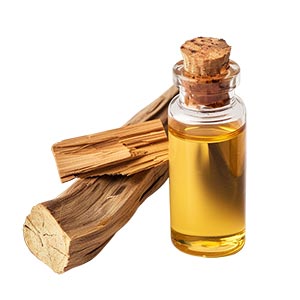
Sandalwood Mysore enriches fragrances with its creamy, luxurious woody depth, evoking warmth, serenity, and exotic sophistication.
Popular Woody Fragrances
Women's Fragrances
Chance Eau Tendre by ChanelA delicate fragrance combining the freshness of citrus with jasmine and the warmth of white musks and teak wood.
Santal Blush by Tom Ford
A mesmerizing, spicy wood scent with sandalwood, spices, and exotic florals for a sophisticated blend.
Samsara by Guerlain
An enticing blend of velvety warmth of sandalwood with jasmine, ylang-ylang, and iris for a sensual experience.
Tam Dao by Diptyque
A meditative scent centered on sacred, creamy, and comforting notes of sandalwood, cypress, and ambergris.
Wood Sage & Sea Salt by Jo Malone London
Captures the freshness of the sea and the earthy depth of sage over a base of woody musk.
Men's Fragrances
Aventus by CreedA bold fragrance blending blackcurrant, Italian bergamot, French apples, and royal pineapple with oakmoss, ambergris, and a touch of vanilla.
Terre d'Hermès by Hermès
An earthy and woody fragrance combining the sharpness of citrus with the depth of pepper and benzoin.
Oud Wood by Tom Ford
An exotic and rich scent featuring rare oud wood, sandalwood, and Chinese pepper for a smoky, indulgent aroma.
Colonia Intensa by Acqua di Parma
A classic scent combining leather, cedarwood, and neroli for a charismatic and intense fragrance.
Gucci Guilty Absolute by Gucci
A modern interpretation of a woody scent, featuring leather, patchouli, and cypress for a bold, uncompromising aroma.

